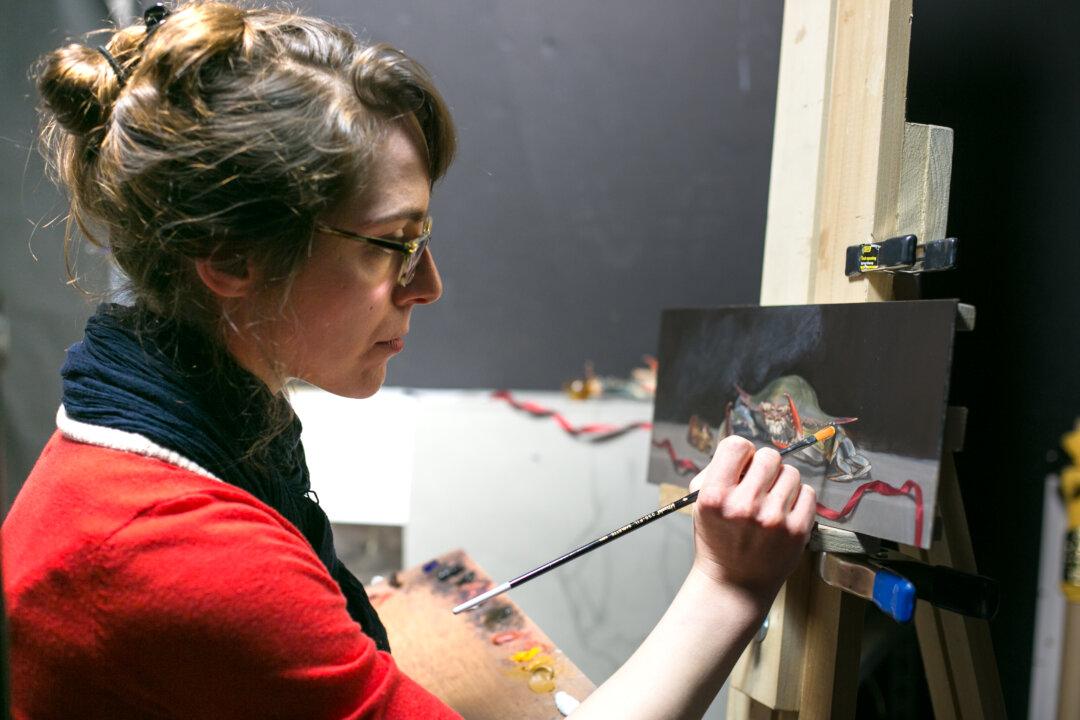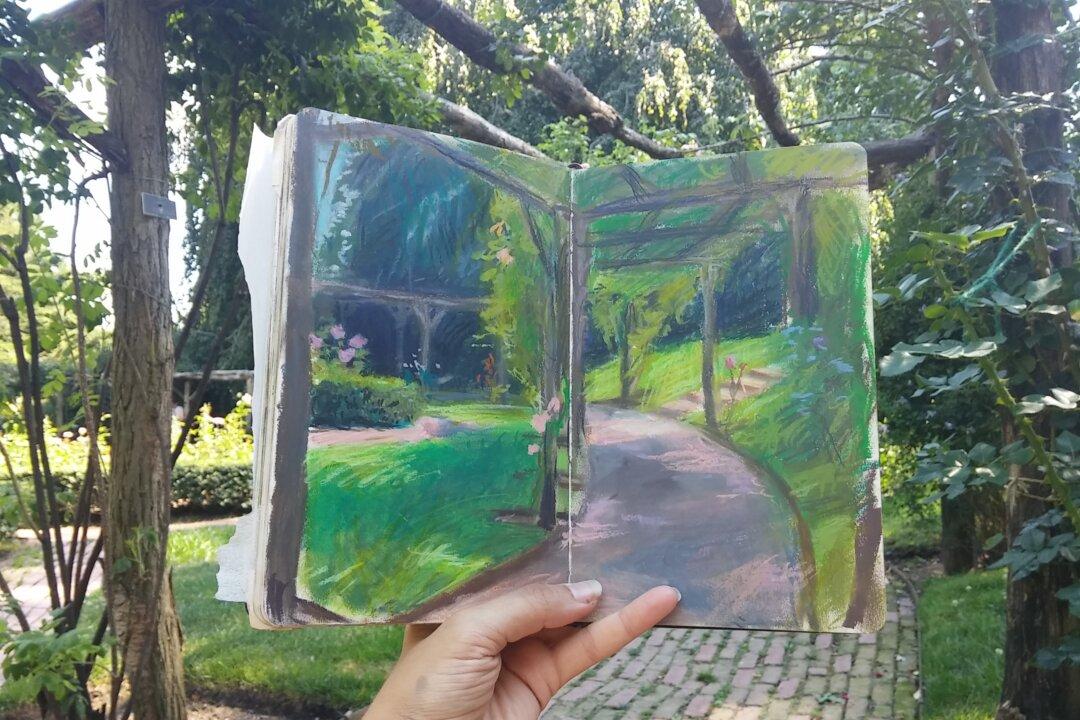NEW YORK—When she paints, Sally Fama Cochrane dives into the chasm between invisible and visible worlds—between the inside and the outside of the body, between numbers and emotions, between cold analysis and comforting storytelling. While some old masters painted allegories of time, wisdom, faith, and themes imbued with Greek mythology or religious morals, Cochrane creates her own allegories inspired by a predominant paradigm of this century—science and medicine.
Everything she paints has a specific meaning. “I’m interested in everything. My brain is a cabinet of curiosities where I file things that I notice and can bring out later when needed,” said Cochrane about her creative process at Grand Central Atelier where she works as an artist in residence. “I’m a very analytical person, I like data and numbers,” she said somewhat bashfully, as if admitting that liking statistics is quite unusual among visual artists.






